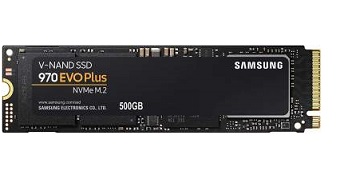M.2 interface used in SSD
The M.2 is a form factor solid-state drive in a thin, sleek shape like a wafer. M.2 (initially released by the name of the Next Generation Form Factor, or NGFF) was conceived as the next step in the mSATA interface.
Unlike the typical SSD and HDDs, M.2 SSD is an internally mounted expansion card that does not require cables for connection to the motherboard. Instead, they are directly plugged into the motherboard using a dedicated connector slot.
M.2 SSD can use either the standard SATA interface or the faster PCIe (Peripheral Component Interconnect Express) interface depending upon the architecture. In both cases, M.2 is mounted directly on the motherboard.
Advantages of M.2:
- Faster speeds and response times
- Extremely simple to install
- No heating issues
- Cleaner and less cluttered PC interior
Disadvantages of M.2:
- Expensive
- Short life span
- Limited capacity
How to read an M.2 card:
M.2 SSDs are in a rectangular shape. They are usually 22 mm wide and 60-80mm long (but can range from 16 all the way upto 110mm).
The first two digits represent width, and remaining numbers represent the length. For example, 2242 card is 22mm wide and 42mm long. Longer M.2 SSDs hold more NAND chips for larger capacity.
Storage range of M.2 SSD:
The storage capacities usually start from 120GB and move further up to 8TB.
SSD Data Transfer Rate:
An M.2 SSD can be SATA-based, PCIe-based with NVMe support, or PCIe-based without NVMe support. An M.2 SSD with NVMe support offers up to five times more bandwidth than SATA M.2 models, bringing better performance in key tasks, such as file transfers, video or photo editing, transcoding, compression and decompression.
Basically it is compatible with multiple interfaces. Therefore the rate of data transfer can vary, depending on the underlying data transfer technology e.g. PCIE 3.0 interface is faster than the PCI 2.0 interface
Effectively there is not a single data rate you can quote.. It depends on whether the M2 SSD is interfaced with SATA or PCIE connectors
Manufacturers of M.2 SATA:
The leading manufacturers of M.2 SSD are

